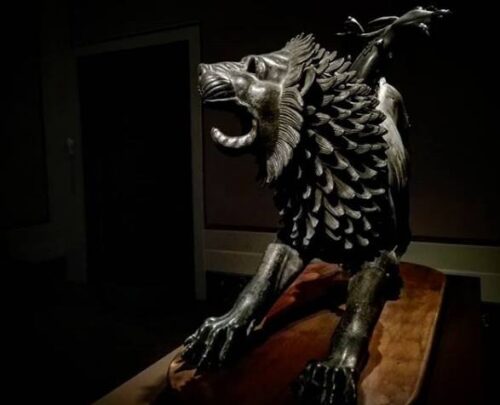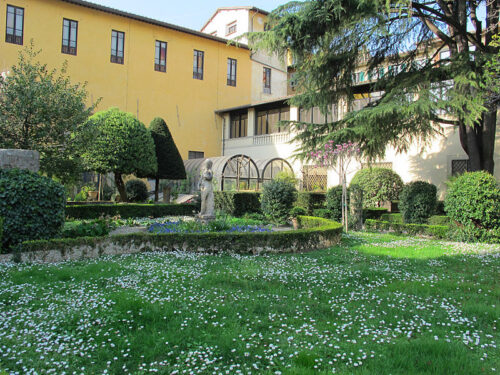Museo Archeologico Nazionale
On the northeast corner of Piazza della Santissima Annunziata, separated from Spedale degli Innocenti by Via della Colonna lies the Palazzo della Crocetta, today the home of the Museo Archeologico Nazionale.
The palazzo was built in 1619 on a property owned by Spedale degli Innocenti, to host the sister of Grand Duke Cosimo II, Maria Maddalena de ‘Medici. The palace was built along with several underground tunnels which connected it to the Convent della Crocetta (which gave it its name back then, today a state educational institute) to Santa Maria degli Angiolini Church and the Basilica della Santissima Annunziata.
At the same time, all the passages above the ground were covered with arched roofs. The reason behind all that trouble was a certain birth deformity that forced Maria Maddalena to pass all of her life hidden from the eyes of the world.
The palace continued to house prominent figures of Florentine life all the years between Maria Maddalena‘s death and its final transformation into a museum in 1880. The formation of the National Archaeological Museum of Florence, one of the oldest in Italy, was part of a wider European phenomenon: the emergence of museums as state institutions linked to the formation of modern nations.

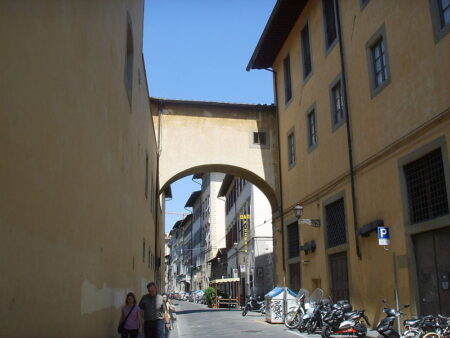
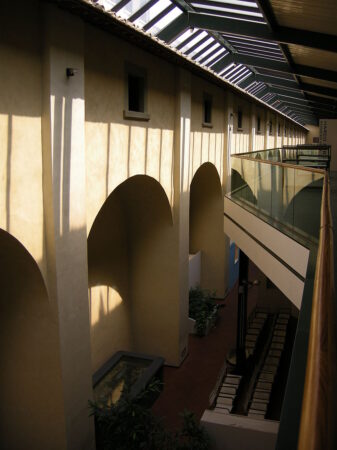
In the framework of a wider program of reorganization of the museums of the city through the dismemberment of the collections of the Uffizi Gallery, the Museum (established by Royal Decree of March 17, 1870) was inaugurated by King Vittorio Emanuele II at Cenacolo di Foligno, in via Faenza, with the collections of the Etruscan Museum, including the Greek and Roman antiquities of the Medici and Lorena collections.
At the same headquarters in Via Faenza, in 1855, the Egyptian Museum was inaugurated, second only to Turin in Italy, which included some antiquities already present in the 18th century in the Medici collections, but largely increased due to the Grand Duke of Tuscany Leopoldo II, Together with Charles X, king of France they financed a scientific expedition in Egypt, led by Jean-François Champollion, the decipherer of the hieroglyphics. The collection was also greatly enriched by Ippolito Rosellini, his friend, and disciple, who would become the father of Italian Egyptology.
The many items collected during the trip, either by excavating or by finding finds from local merchants, were fairly divided on the return between the Louvre in Paris and Florence. The increase in the collections made the premises of Via Faenza soon inadequate and in 1880 the Archaeological Museum was placed in the present building of the Crocetta Palace.
The Egyptian Museum was moved to the same building in 1883. Between 1890 and 1898 some of the great Etruscan, Greek, and Roman brass and numerous Greek and Roman bronze medals from Medicean and Lorentzian collections (1890) and the Numismatic (1895) and Glittic (1898) collections came from the Uffizi.

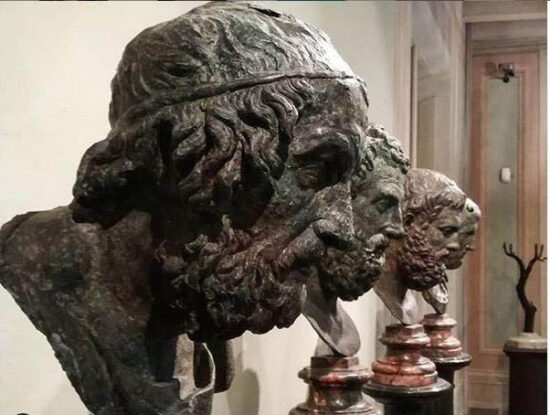
In the courtyard of the palace, the remains of the Roman monuments that came to light during the renovation work carried out in the center of Florence at the end of the 19th century were restored and at the same time, the section of the Topographic Museum of the Etruria was inaugurated.
In a space of seventeen halls, the history of the Etruscans through all the materials collected during excavations carried out in the territory of ancient Etruria were displayed; In the historic Garden, open to the public after 1902, some monumental tombs were rebuilt with original materials to document the main funerary architectural types used by the Etruscans. (Description by the Polo Museale della Toscana Institute).
Although this museum is a must for history buffs there are some complaints about the way the exhibits are displayed and the lack of English guidance/descriptions. Despite the complaints, most visitors do suggest the stop.
